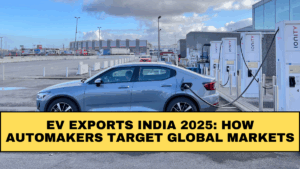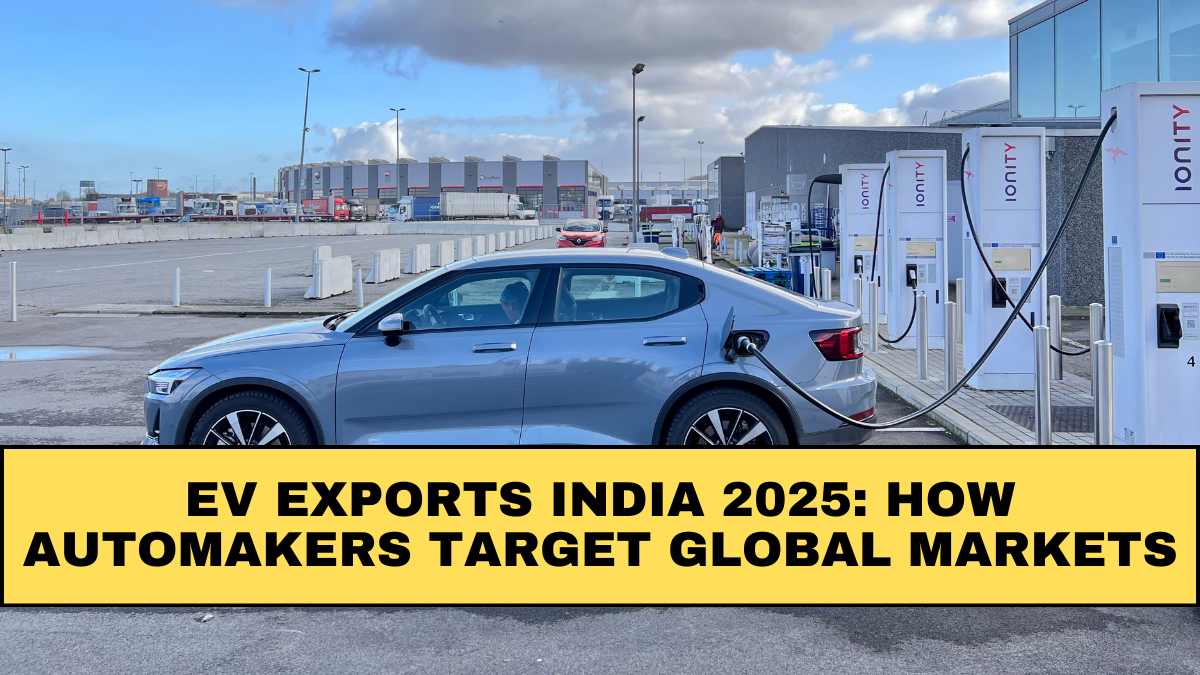India’s electric vehicle industry is rapidly expanding its footprint in the global market in 2025. With domestic manufacturers improving EV technology, battery efficiency, and production capacity, Indian automakers are now targeting exports to Asia, Europe, and other international regions. EV Exports India 2025 reflects both the country’s growing manufacturing capabilities and the rising global demand for cleaner, sustainable transportation solutions.
By leveraging government incentives, export-friendly policies, and advanced production facilities, Indian EV makers are positioning themselves as key players in the international market. These efforts are driving innovation, creating employment, and boosting the country’s economy while contributing to global carbon reduction goals.

India’s EV Export Growth
Indian automakers are now producing electric cars, two-wheelers, and commercial EVs suitable for international standards. Export destinations include Southeast Asia, the Middle East, and Europe, where demand for cost-effective and reliable EVs is increasing. Government support in the form of export incentives, tax benefits, and streamlined regulatory approvals has enabled manufacturers to expand production and access foreign markets efficiently.
Key Players in EV Exports
Leading Indian EV companies are innovating to meet global quality and safety standards. Major automakers focus on improving battery technology, increasing vehicle range, and integrating smart features like connected systems and AI-assisted driving. Startups and established companies alike are collaborating with global partners to enhance technology transfer and meet international certifications.
Economic and Environmental Impact
Exporting EVs strengthens India’s manufacturing ecosystem and generates foreign revenue. It also positions the country as a global contributor to clean mobility solutions. Environmentally, increased EV adoption in international markets supports global efforts to reduce greenhouse gas emissions and dependence on fossil fuels, highlighting India’s role in sustainable transportation.
Challenges in Expanding EV Exports
Despite growth, challenges remain. Global competition, logistics costs, and compliance with foreign regulations require careful planning. Battery sourcing, supply chain optimization, and currency fluctuations also influence profitability. However, Indian manufacturers are investing in R&D, localizing components, and leveraging trade agreements to overcome these hurdles.
Future Prospects
The outlook for EV Exports India 2025 is promising. With continuous innovation, rising global demand, and supportive government policies, Indian automakers are expected to expand their presence in international markets. Integration of smart technologies, better charging infrastructure, and sustainable production practices will further enhance India’s competitiveness in the EV export sector.
Conclusion
EV Exports India 2025 showcase the country’s growing leadership in electric mobility. By targeting global markets, Indian automakers are boosting the economy, driving innovation, and promoting sustainability worldwide. With continuous advancements and supportive policies, India is poised to become a key player in the international EV landscape, meeting global demand while strengthening its manufacturing capabilities.
FAQs
Which countries are importing Indian EVs?
India exports electric vehicles to Asia, Europe, and select Middle Eastern countries.
How is India supporting EV exports?
Through government incentives, tax benefits, and streamlined regulatory processes.
What types of EVs are exported?
Electric cars, two-wheelers, and commercial EVs with international quality standards.
Are Indian EVs competitive globally?
Yes, with improved battery technology, vehicle range, and smart features, they meet global standards.
What challenges do exporters face?
Compliance with foreign regulations, supply chain management, and logistics costs are key challenges.
